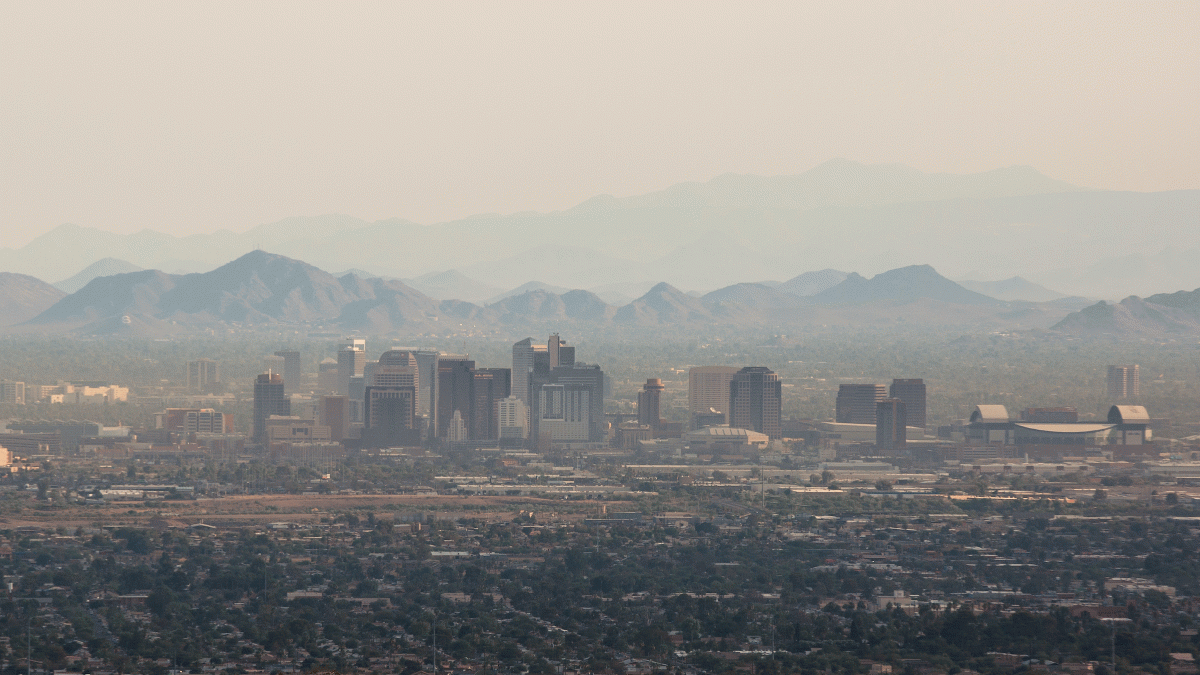Challenges to our planet can overwhelmingly command the headlines: climate change, massive population increases, dwindling resources.
But with every crisis comes an opportunity for creativity — innovative responses that have the potential to improve our lives and change how we interact with the ecosystem and with one another. And in Phoenix and other “extreme” cities, there is growing urgency to find those solutions.
Arizona State University’s Thought Huddle podcast explores such ideas in its latest episode, “Hot and Habitable: Creating Sustainable Cities.”
Host Mary-Charlotte Domandi talks with three ASU sustainability experts on ways to make urban spaces more livable for the long term: architect Jack DeBartolo, a faculty associate in The Design School at ASU’s Herberger Institute for Design and the Arts; Elizabeth Wentz, dean of social sciences in the College of Liberal Arts and Sciences and a professor in the School of Geographical Sciences and Urban Planning; and Wellington “Duke” Reiter, an architect, urban designer and executive director of ASU’s University City Exchange.
Each of these experts offers their insights into both the challenges we face and the concrete responses that can drive change. Consider one idea shared by DeBartolo to create shade with solar arrays and make a 15-acre area of downtown Phoenix more habitable year-round: “The design concept was to put this shaded pavilion a hundred feet above the ground to create a real pedestrian environment, an outdoor room of sorts, a real civic space.” Though this was not produced, DeBartolo is optimistic that the future will include designing spaces that “are both pragmatic and poetic.”
With a focus on resiliency, Wentz notes that this research often involves looking at long-term stresses such as population growth, drought and high heat: “How can we adapt and improve our living conditions so that the community is stronger overall,” she asks. One of her answers is more compact cities where commuting is limited and where people live and work “without spending an hour and a half driving to get to their jobs.”
For his part, Reiter summarizes the challenge ahead: “The evidence about where things are moving is so obvious. How do we rally the capacity to act? That’s really the big question around sustainability, resiliency and climate change.”
Find more episodes at thoughthuddle.com.
Top photo by Deanna Dent/ASU Now
More Environment and sustainability

Researcher works on changing people's mindsets to fight climate change
Meaningful action to heal the climate requires a complete shift in the way people think and perceive each other, according to an expert on social transformation who spoke at Arizona State University…

NOAA, ASU offer workshop to bridge ocean exploration, education
Oceans are vital to sustaining life on Earth, as they produce over half of the oxygen we breathe and play a crucial role in regulating the planet's climate. They also support a diverse array of…

A united front for sustainability and the economy
When four leaders of esteemed learning institutions and the mayor of Phoenix gather in one location at the same time, it’s a tip-off that something big is going down.When they’re joined by visionary…
